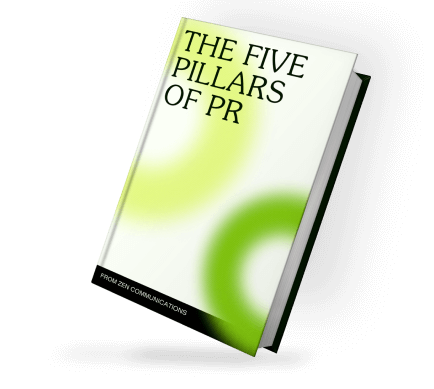Free e-book download click to download the first two chapters of ‘The Five Pillars of PR’
The concept of Advertising Value Equivalent (AVE) has been around for donkey’s years, long before I started out in the industry. So, what exactly is it, how does it work, and what does it mean?
What is it?
AVE is basically a measurement tool used by industry professionals to calculate how much an individual article in a specific publication would have cost the client had they purchased the equivalent space in advertising. There are specialist media agencies which now provide the information relating to an article’s ‘cost’ in an instant, but back in the day (and I remember it well) it was literally a matter of getting your ruler out and measuring the size and space of each individual piece of coverage achieved. You’d then tap into your calculator the specific publication’s unique Single Column Centimetre rate (SCC) multiplied by the length and width of your piece, and voila!
The methods of obtaining the specific data have of course evolved, but the whole idea of AVE as a measurement tool is still very much a prevalent part of many PR agencies both here in the UK and further afield. But how valuable is it and what does it really tell our clients? It’s certainly a debate that has gone on for almost as many years as it’s been around, and one which I’m sure will continue to gather pace. So what are the arguments?
How Does it Work?
Some say that because advertising is different to PR, it should not be evaluated as such. To counteract this and to set PR apart as the more ‘credible’ of the two disciplines, it is commonplace for agencies to multiply the AVE figure. However, the worrying thing is that here there is no industry standard - with some agencies multiplying the AVE figure by 2.5, some by three, and others by ten. This discrepancy, coupled with the fact that advertising costs have fallen dramatically in recent times, means that PR agencies reliant on AVE in demonstrating their worth to clients are likely to be disadvantaged. In addition, there is also the real potential for clients to be ‘duped’ into believing over-inflated, very subjective ROI stats which doesn’t serve to benefit anyone.
Narrow Vision
Whilst AVE is great for those clients looking for hard facts and figures to show their financial director or MD, it certainly doesn’t provide the full picture. It doesn’t take into account the ‘quality’ of the coverage or indeed whether it is targeted at a specific audience. Great news that the double-page spread you secured in Knitting Times has a PR value of £5,000, but if your client is a manufacturing company looking to influence and engage with potential customers, it isn’t going to have much impact on their bottom line! Equally, if the piece is miniscule in size and contains no core messages relating to your client’s offer, it isn’t going to get the phone ringing or the orders flooding in.
The Wider Picture
The key is to ensure that any analysis of a PR campaign for your clients is all-encompassing and that it is aligned with what they initially set out to achieve. As well as focusing on pure financial costs (or AVE) for example, identify who the coverage was aimed at, did it include some juicy nuggets of information outlining your client’s specific service/expertise/offer, where within the title was the article published, and was it impactful?
Coverage is of course only one of the ways that an agency can measure the success of any campaign, and we always work with clients to identify any additional key performance indicators that we can build into our analysis. For example, success of a campaign may mean an increase in web traffic, and if so, we establish whether we’re able to access Google Analytics for their website to monitor this? It may mean an increase in online sales. If so, are we able to measure accurately where leads are coming from? Or, it may be the positive testimonials from happy clients? If so, are we able to secure direct customer feedback and how can we communicate this?
Conclusion
There will always be debate across the industry about the best way to demonstrate return on investment to clients and there will always be differing opinions on what works and what doesn’t. I believe that Advertising Value Equivalency does still have its place in the analysis mix, purely because of its ability to deliver those hard number crunching facts. However, it’s certainly not the be-all-and-end-all. A combination of measurements including all of the above is the best, and most accurate, way to showcase to clients the real value you as an agency are bringing them and to demonstrate the impact your PR activity is having on their bottom line.


Free Download